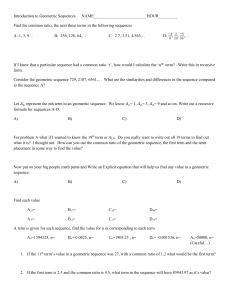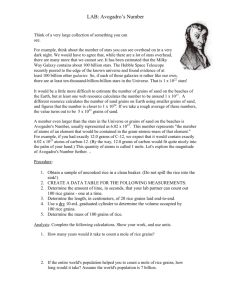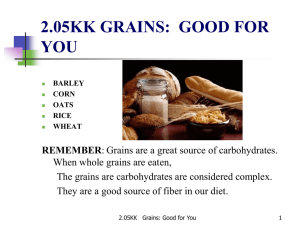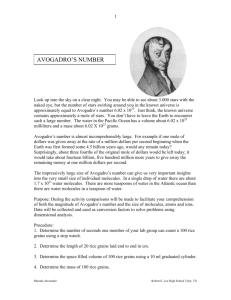Unit 01 Exponential Numbers Pt II
advertisement
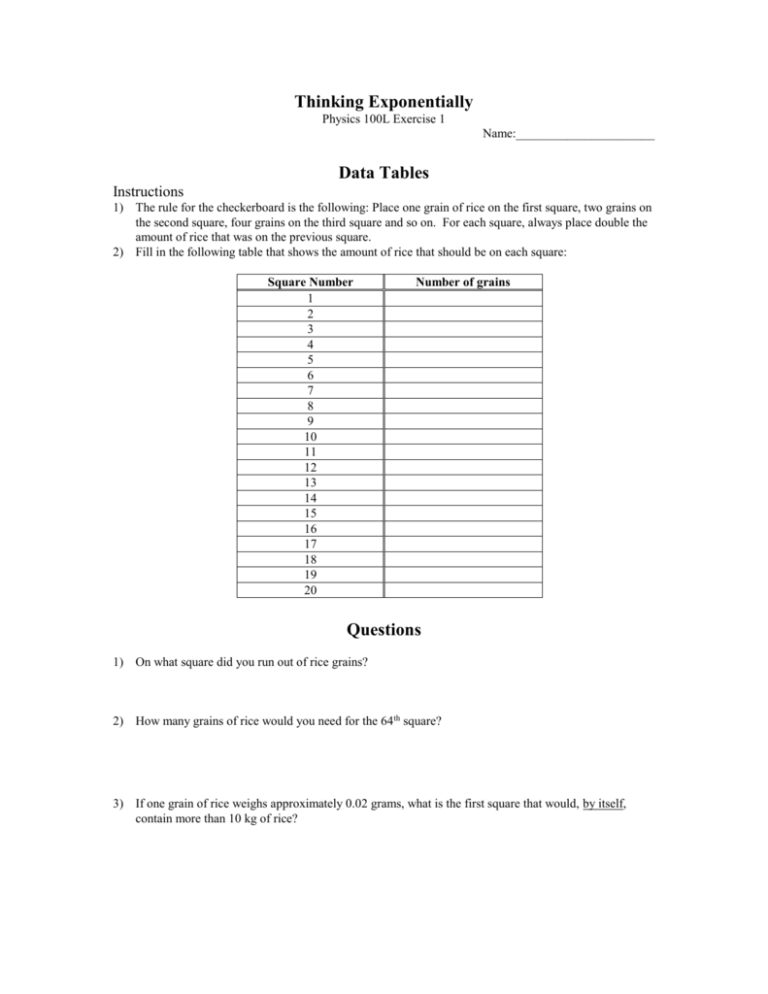
Thinking Exponentially Physics 100L Exercise 1 Name:______________________ Data Tables Instructions 1) The rule for the checkerboard is the following: Place one grain of rice on the first square, two grains on the second square, four grains on the third square and so on. For each square, always place double the amount of rice that was on the previous square. 2) Fill in the following table that shows the amount of rice that should be on each square: Square Number 1 2 3 4 5 6 7 8 9 10 11 12 13 14 15 16 17 18 19 20 Number of grains Questions 1) On what square did you run out of rice grains? 2) How many grains of rice would you need for the 64 th square? 3) If one grain of rice weighs approximately 0.02 grams, what is the first square that would, by itself, contain more than 10 kg of rice? 4) The amount of rice grown in the world in one year is 500 million metric tons. a) If a metric ton is 1000 kg, then how many kilograms of rice are in one year’s crop? b) How many grams? c) If one grain of rice weighs approximately 0.02 grams, how many grains are in the world’s annual rice production? d) How does this compare to the amount of rice on the 64 th square? (See Question 2. To compare the two numbers, divide the larger number by the smaller number, this will tell you how many times bigger the larger number is.) 5) Suppose that our rule for filling up the board was the following: start with one grain of rice. On the second square you place TEN grains of rice. On the third square you place 100 grains of rice. And for each additional square you place ten times the number of grains as the previous square. a) Following these rules, how many grains of rice would you place on the 64 th square? b) How many kilograms would this be? (Again, one grain of rice weighs 0.02 grams). c) If the mass of the earth is 6 x 1024 kg, then which is greater, the mass of the rice on the 64 th square, or the mass of the earth? 6) Suppose President Mortimer agreed to pay your laboratory instructor one cent for his first lab section, two cents for the second, four cents for the third, eight cents for his fourth, etc. Each week, the lab instructor meets with two lab sections, and the semester is 14 weeks long, for a total of 28 lab sections. How much would the instructor be paid for the second lab section of the 14 th week? Graphs Instructions: 1) The Linear Graph 1) The square number is along the horizontal axis 2) The number of grains is along the vertical axis 3) Place a dot marking the number of grains in each box 4) Notice how fast you run out of space! 2) The Logarithmic Plot 1) The square number is again along the horizontal axis. 2) The number of grains is along the vertical axis 3) Notice that the vertical axis increases in powers of ten 4) Again place a dot marking the number of grains in each box 5) Notice how many more squares you are able to plot on this type of graph.
